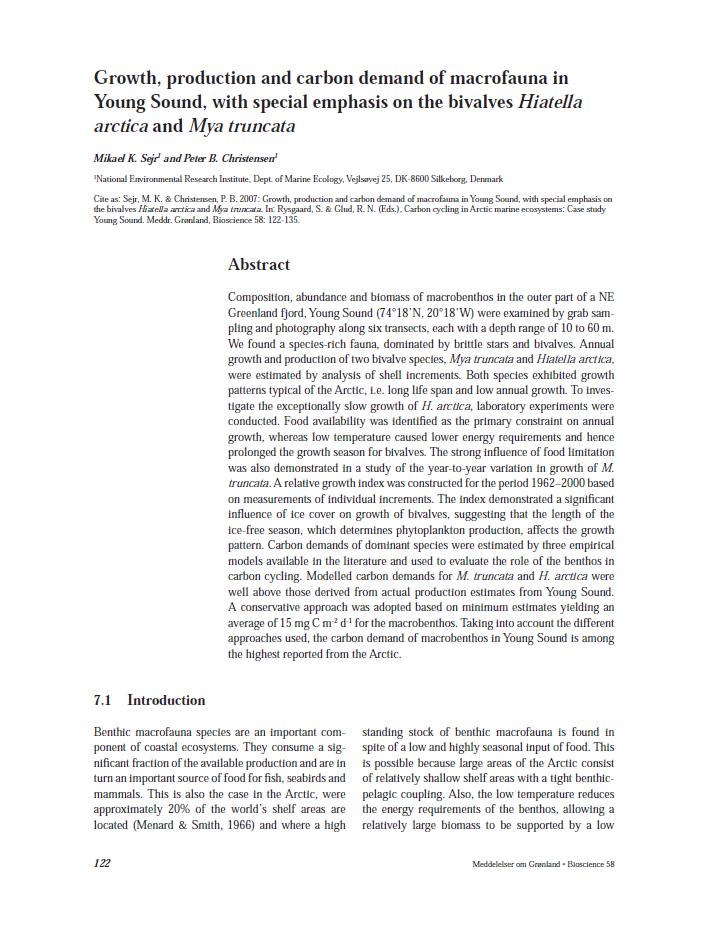Growth, production and carbon demand of macrofauna in Young Sound, with special emphasis on the bivalves Hiatella arctica and Mya truncata
DOI:
https://doi.org/10.7146/mogbiosci.v58.142645Abstract
Composition, abundance and biomass of macrobenthos in the outer part of a NE Greenland fjord, Young Sound (74°18’N, 20°18’W) were examined by grab sampling and photography along six transects, each with a depth range of 10 to 60 m.
We found a species-rich fauna, dominated by brittle stars and bivalves. Annual growth and production of two bivalve species, Mya truncata and Hiatella arctica, were estimated by analysis of shell increments. Both species exhibited growth patterns typical of the Arctic, i.e. long life span and low annual growth. To investigate the exceptionally slow growth of H. arctica, laboratory experiments were conducted. Food availability was identified as the primary constraint on annual growth, whereas low temperature caused lower energy requirements and hence prolonged the growth season for bivalves. The strong influence of food limitation was also demonstrated in a study of the year-to-year variation in growth of M. truncata.
A relative growth index was constructed for the period 1962–2000 based on measurements of individual increments. The index demonstrated a significant influence of ice cover on growth of bivalves, suggesting that the length of the ice-free season, which determines phytoplankton production, affects the growth pattern. Carbon demands of dominant species were estimated by three empirical models available in the literature and used to evaluate the role of the benthos in carbon cycling. Modelled carbon demands for M. truncata and H. arctica were well above those derived from actual production estimates from Young Sound.
A conservative approach was adopted based on minimum estimates yielding an average of 15 mg C m-2 d-1 for the macrobenthos. Taking into account the different approaches used, the carbon demand of macrobenthos in Young Sound is among the highest reported from the Arctic.

Downloads
Published
Issue
Section
License
Coypyright by the authors and the Commision for Scientific Research in Greenland / Danish Polar Center/Museum Tusculanum Press as indicated in the individual volumes. No parts of the publications may be reproduced in any form without the written permission by the copyright owners.

